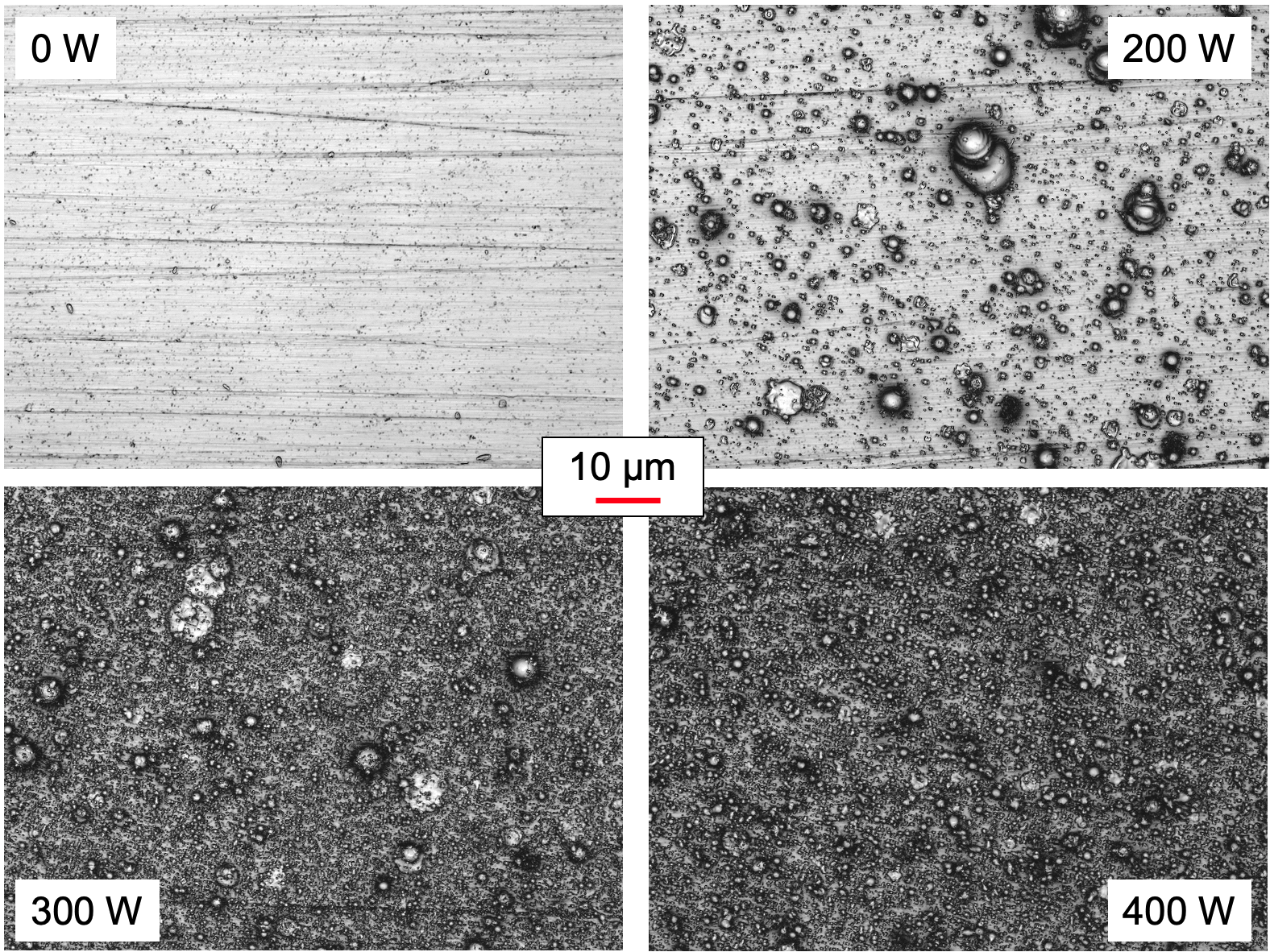Tungsten Fuzz Characterization by Helicon (TUFCON)
March 2, 2022

The Tungsten Fuzz Characterization by Helicon (TUFCON) chamber was originally used to investigate the formation of tungsten fuzz after helium plasma exposure. This work performed parametric sweeps over ion energy and fluence to determine the causes of the fuzz formation. Recently, the device has been used to determine the effect of hydrogen plasma parameters and radical density on the spitting of microdroplets from liquid metals (tin, lithium, tin-lithium).Upon radical or plasma exposure, hydrogen bubbles form in the molten metal, which eventually migrate to the surface and burst, releasing microdroplets of liquid metals. This could be extremely detrimental to fusion plasma operation, as droplets entering the core plasma would reduce the plasma performance. In an effort to better understand these droplets, the plasma in TUFCON is being fully characterized by Langmuir probe and radical probe to determine plasma temperature, plasma density, and radical density. After the plasma is fully characterized, a microdroplet size distribution will be made as a function of liquid temperature and plasma parameters. Eventually, the aim is to implement techniques which can mitigate the droplet emission or prevent the droplets from entering the core plasma.